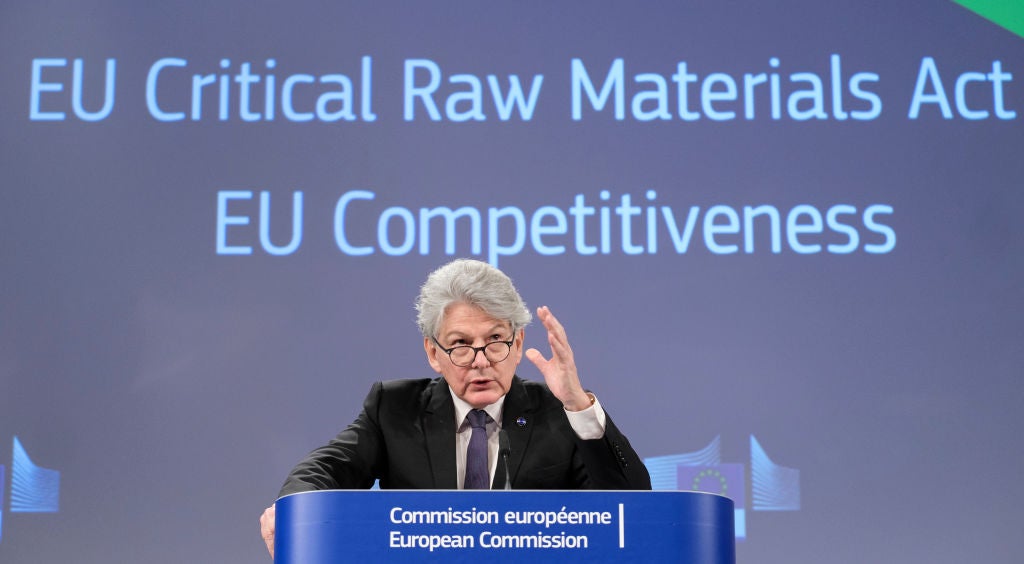
As the world shifts to renewables, governments have realised the need to focus on securing the supply of materials needed for a low-carbon energy transition. Many green technologies depend on a range of critical minerals and materials. The European Commission’s REPowerEU plan would require 440GW of operational wind capacity by 2030 and an average installation rate of 30GW each year between now and then, according to trade association WindEurope. To do that, the industry needs critical materials like rare earths for magnets and coking coal to produce the iron and steel used in wind turbines.
Without secure supplies, the energy transition will be more difficult and costly. In the wake of Covid-19, Russia’s invasion of Ukraine and the energy crisis, the fragility of many supply chains has become apparent. Prices of critical materials like aluminium, nickel and rare earths have all soared compared with pre-pandemic levels, pushing up the cost of a wind turbine by 38% over the past two years.
Currently, much of the production and processing of critical materials is in the hands of just a few countries. The EU sources 99% of its boron from Turkey, while 100% of its ‘heavy’ rare earths and 85% of its ‘light’ rare earths are processed in China.
That the EU is too reliant on external suppliers is also the conclusion of a Critical Raw Materials Assessment published in March, as a part of a new EU Critical Raw Materials Act. To secure future supplies, the EU wants to be more self-reliant in the mining, processing and recycling of materials it identifies as critical or strategic. By 2030, the EU wants at least 10% of its extraction, 40% of its processing and 15% of its recycling, all as a percentage of annual consumption, to be domestic. In addition, not more than 65% of the annual consumption of any strategic raw material can come from a single country, at any processing stage.
For the critical raw materials needed for wind energy, the EU currently has a 77% import reliance for extraction. Processing is slightly more secure – on average, 54% of processing is done outside the EU. The reliance on external producers of critical materials will likely remain an issue, as mining in the EU faces hurdles such as environmental concerns. Seven years to reach 10% domestic extraction is not a lot of time since the average mining project takes 16.5 years to move from discovery to first production, according to the International Energy Agency.
Sweden, for example, has Europe’s largest known deposit of rare earths, which could potentially fulfil a large part of the EU’s future demand for these minerals. However, the challenge remains to secure permits in time. The proposed Nunasvaara South graphite mine has been trying to get permits for a decade, while a potential rare earth mining project in Norra Kärr has seen strong, sustained local opposition. Finland, which has big deposits of nickel and cobalt, recently overhauled its mining legislation to give greater control to locals over new permits and to protect the environment.

US Tariffs are shifting - will you react or anticipate?
Don’t let policy changes catch you off guard. Stay proactive with real-time data and expert analysis.
By GlobalData


